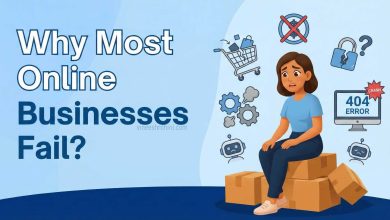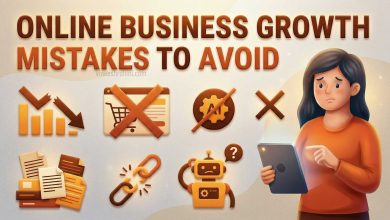Is Dropshipping still worth it in 2023 ?
Dropshipping is a popular e-commerce business model where an online retailer sells products without actually holding inventory. The retailer simply markets the products on their website, and once an order is placed, the retailer orders the product from a supplier who then ships it directly to the customer. This model has gained popularity over the years due to its low startup costs and ease of entry, but the question remains – is dropshipping still worth it in 2023? In this essay, we will explore the pros and cons of dropshipping in 2023, and assess whether it is still a viable business model.
Pros of Dropshipping in 2023:
- Low Startup Costs:
One of the biggest advantages of dropshipping is its low startup costs. Unlike traditional retail businesses, there is no need to invest in inventory or warehousing, which can be a significant expense for businesses. Instead, dropshippers only need to invest in creating a website and marketing their products, which can be done at a relatively low cost. This makes it easier for entrepreneurs to start a business without having to worry about raising significant capital.
- Wide Product Range:
Dropshipping allows retailers to offer a wide range of products without having to invest in inventory. Since products are sourced from suppliers, retailers can add a variety of products to their website without having to worry about storing or managing inventory. This can be particularly advantageous for retailers who want to offer a large selection of products to their customers.
- Flexibility:
Dropshipping offers a great deal of flexibility, particularly in terms of location and time. Since the business can be managed entirely online, retailers can operate from anywhere in the world, as long as they have access to the internet. This also allows for a flexible work schedule, making it an attractive option for entrepreneurs who want to work on their own terms.
- Low Overhead Costs:
Since dropshipping eliminates the need for inventory and warehousing, it also reduces overhead costs significantly. Retailers don’t have to worry about paying rent for a physical store or hiring staff to manage inventory. This can result in significant savings, which can be reinvested in the business or used to offer more competitive pricing to customers.
Cons of Dropshipping in 2023:
- Increased Competition:
Dropshipping has become a popular business model in recent years, which has led to increased competition in the market. With more retailers entering the market, it can be challenging to stand out and attract customers. This can be particularly difficult for new retailers who may not have the marketing expertise or resources to compete effectively.
- Low Profit Margins:
Dropshipping often comes with low profit margins. Since retailers are not buying products in bulk, they typically pay higher prices for individual products, which reduces profit margins. Additionally, competition in the market can lead to price wars, which can further reduce profit margins. This can make it difficult for retailers to make a profit, particularly in highly competitive markets.
- Dependence on Suppliers:
Dropshippers are heavily dependent on their suppliers to fulfill orders and deliver products to customers. If a supplier experiences delays or quality issues, it can have a significant impact on the retailer’s reputation and ability to fulfill orders. Retailers also have limited control over the quality of products that are being shipped to customers, which can lead to negative feedback and lost sales.
- Logistics Issues:
Logistics can be a significant challenge for dropshippers, particularly when dealing with international suppliers. Shipping times can be longer, and there is always the risk of products being lost or damaged in transit. Additionally, managing returns and refunds can be difficult when products are being shipped directly from the supplier to the customer.
Is Dropshipping Still Worth It in 2023?
While dropshipping still offers some advantages in 2023, it is important to assess whether it is still worth it as a viable business model. The truth is that the answer will vary depending on a number of factors, such as the market niche, the level of competition, and the retailer’s marketing and operational expertise. However, there are a few key factors to consider when assessing whether dropshipping is still worth it in 2023.
- Market Niche:
One of the most important factors to consider when assessing the viability of dropshipping is the market niche. Some niches, such as health and beauty, electronics, and home goods, are more competitive than others. In these markets, it can be difficult to stand out and attract customers, particularly for new retailers who may not have an established reputation. However, there are still plenty of niche markets that are underserved and offer opportunities for new retailers to establish a foothold.
- Marketing Expertise:
Another important factor to consider is the retailer’s marketing expertise. With increased competition in the market, it is essential to have a strong marketing strategy to stand out and attract customers. This can include creating compelling product descriptions, running targeted ads, and using social media to build a following. Retailers who have a strong understanding of their target audience and can create a unique brand identity are more likely to succeed in the dropshipping market.
- Operational Expertise:
Operational expertise is also crucial for success in dropshipping. Retailers who can effectively manage supplier relationships, handle logistics, and ensure timely delivery of products are more likely to succeed. It is also important to have a solid understanding of the supply chain and be able to quickly adapt to changes in the market or supplier issues.
- Profit Margins:
Profit margins are a significant consideration when assessing the viability of dropshipping. While dropshipping can offer low startup costs and low overhead, it often comes with lower profit margins compared to traditional retail businesses. Retailers who can find high-quality suppliers and negotiate better pricing may be able to improve their profit margins, but this can be difficult in a competitive market.
- Customer Experience:
Finally, the customer experience is a critical factor for success in dropshipping. Since retailers have limited control over the quality of products being shipped, it is essential to manage customer expectations and ensure timely delivery of products. Providing excellent customer service, including quick and responsive communication, easy returns and refunds, and fast shipping, can help build a loyal customer base and improve the retailer’s reputation.
In conclusion, dropshipping can still be a viable business model in 2023, but success will depend on a number of factors, including the market niche, competition, marketing and operational expertise, profit margins, and customer experience. While dropshipping offers low startup costs and flexibility, it also comes with some significant challenges, including increased competition, low profit margins, and dependence on suppliers. Retailers who can effectively navigate these challenges and provide a unique value proposition to customers are more likely to succeed in the dropshipping market.



